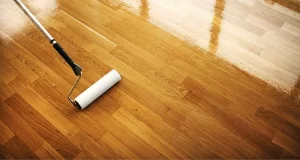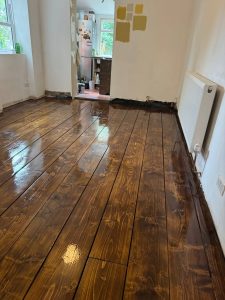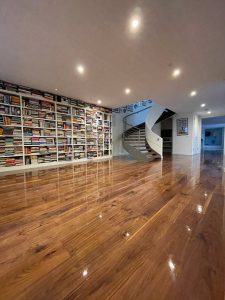The Impact of Seasonal Changes on Sanded Floors

Protect and maintain your wooden floors throughout the year
Understanding Seasonal Changes and Their Effects
Sanded wooden floors are a beautiful addition to any home, but they can be sensitive to seasonal changes. In London, where the climate varies significantly throughout the year, it’s essential to understand how these changes can affect your floors. Here’s what you need to know:
- Temperature Fluctuations: Changes in temperature can cause wooden floors to expand and contract, leading to gaps, cracks, and potential warping.
- Humidity Levels: High humidity can make wood swell, while low humidity can cause it to shrink. Both extremes can damage sanded floors if not properly managed.
- Moisture Exposure: Seasonal rain and snow can introduce excess moisture into your home, affecting the stability and appearance of your wooden floors.
Protecting Your Floors in Different Seasons

Each season presents unique challenges for maintaining sanded wooden floors. Here are some tips to protect your floors throughout the year:
Spring
- Control Humidity: Use dehumidifiers to maintain optimal humidity levels as the weather warms up and becomes more humid.
- Clean Thoroughly: Spring cleaning can help remove any dirt and debris that accumulated during winter, preventing scratches and damage.
Summer
- Prevent Sun Damage: Direct sunlight can fade and dry out wooden floors. Use curtains or blinds to protect your floors from excessive sun exposure.
- Maintain Airflow: Use fans or air conditioning to keep the air circulating and reduce humidity levels inside your home.
Autumn
- Prepare for Moisture: Autumn often brings rain and dampness. Place mats at entryways to reduce the amount of moisture brought inside.
- Inspect for Damage: Check your floors for any signs of damage from the summer and address them before winter sets in.
Winter
- Manage Indoor Heating: Use humidifiers to counteract the drying effects of indoor heating systems, which can reduce humidity levels and cause wood to shrink.
- Protect from Snow and Salt: Use rugs and mats to protect floors from snow, ice, and salt, which can cause water damage and scratches.
Long-Term Maintenance Tips

Consistent maintenance throughout the year will keep your sanded floors looking their best. Here are some long-term maintenance tips:
- Regular Cleaning: Sweep and vacuum regularly to prevent dirt and grit from scratching the floor’s surface.
- Refinishing: Periodically refinish your floors to restore their shine and protect them from wear and tear.
- Use Protective Pads: Place pads under furniture legs to prevent scratches and dents when moving items around.
- Monitor Indoor Climate: Keep an eye on your home’s humidity and temperature levels to ensure they remain within a safe range for wooden floors.
Professional Help
If you’re unsure about how to maintain your sanded floors or need professional assistance, consider consulting with flooring experts. Professionals can provide tailored advice and services to ensure your floors remain in top condition throughout the year. For expert floor care in London, contact us today. Our team is ready to help you protect and preserve your beautiful wooden floors.







The Best Floor Sanding Techniques for Kitchens and Bathrooms
The Best Floor Sanding Techniques for Kitchens and Bathrooms Kitchens and bathrooms are high-traffic[Read more...]
How to Identify and Repair Water Damage Before Sanding
How to Identify and Repair Water Damage Before Sanding Ensure your London home’s floors[Read more...]
The Role of Temperature and Humidity in Floor Sanding
The Role of Temperature and Humidity in Floor Sanding When it comes to floor[Read more...]
How Floor Sanding Can Transform Your London Home
Living in London comes with the charm of historic architecture and classic interiors. However, maintaining[Read more...]
The Benefits of Using a Professional Floor Sanding Service
The Benefits of Using a Professional Floor Sanding Service Enhance the Beauty and Longevity[Read more...]
Floor Sanding for Historic Homes: Preservation Tips
Floor Sanding for Historic Homes: Preservation Tips Maintaining the Charm and Integrity of Your[Read more...]
Floor sanding and renovation and installation services in Lewisham
**Lewisham: A Thriving South London Community** Lewisham is a diverse and dynamic area in southeast[Read more...]
Floor Finishes
Making a start on your wooden floor finish. Timber floors require a protective coating to[Read more...]
Gallery 01 – Sand and oak stain and varnish finish
[Read more...]
Sep
Innovations in Floor Sanding Technology
The field of floor sanding has seen significant advancements in recent years, making the process[Read more...]